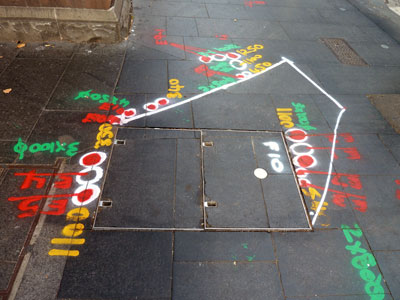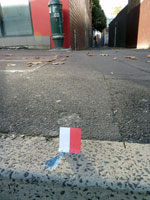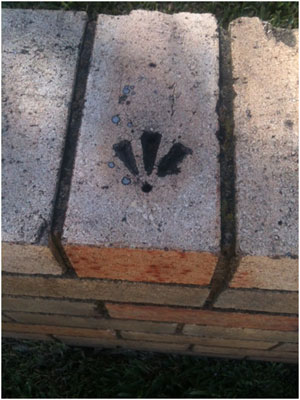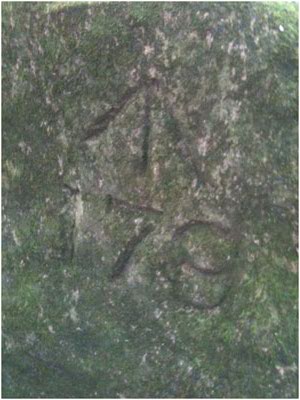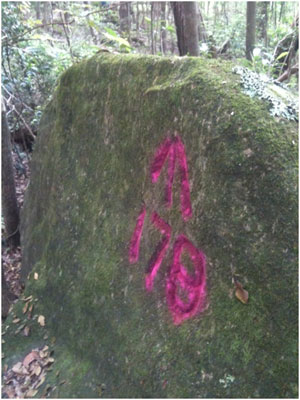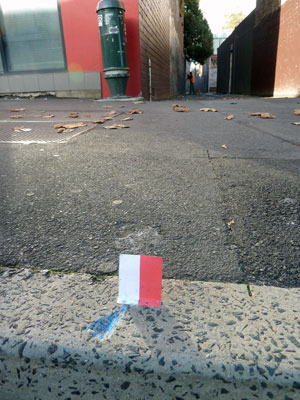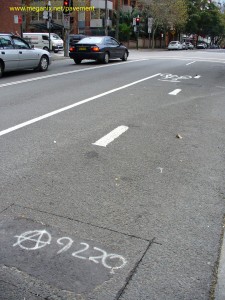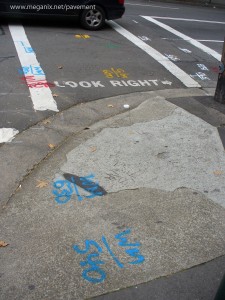The Festive Season is upon us and, in response, the blizzard of pavement markings in Sydney’s central business district has taken on an appropriately merry appearance, with designs based on traditional Christmas colours.
A recent article in the Sydney Morning Herald about ‘Sydney street scribbles’ goes some way to translating what these symbols indicate about the pipes and cables buried beneath the pavement. However, here is my alternative translation of the photograph above, taken on the corner of George and Bathurst Streets.
It is a double manhole or service cover, cleverly decorated to represent a Gingerbread House covered in snowy frosting. There are fairy lights draped on the roof and hanging by the window and front door. The chimney, in the shape of a Christmas stocking, also has fairy lights. These are focussed on a point in the sky (E9-1) which may be interpreted either as the star in the EAST, or the route Santa’s sleigh will take on Christmas EVE.
The ELVES who live in the manhole gingerbread house have festooned it with codified greetings to Sydneysiders as they go about their daily work. E1, for example, stands for EXPRESSIONS of cheer to each and every one of you; E4 means EVERY good wish for the New Year. F10 is an interesting one. It reads FORGIVE us for any TENsion or aesthetic discomfort we may have caused by making such an unholy mess of Sydney’s bluestone footpaths.
